Last Updated on August 2, 2021

Welcome to The Best Movie You NEVER Saw, a column dedicated to examining films that have flown under the radar or gained traction throughout the years, earning them a place as a cult classic or underrated gem that was either before it’s time and/or has aged like a fine wine.
This week we’ll be looking at DARK CITY.

THE STORY: in a styalized city rooted in cinema's memory of noir, an amnesiac man wakes to find himself accused of being a serial killer and pursued by both a weary detective and a strange doctor with an even stranger connection to his mysterious past.
THE PLAYERS: director/co-writer Alex Proyas. Co-writers David Goyer and Lem Dobbs. Actors Rufus Sewell, Jennifer Connelly, William Hurt, Kiefer Sutherland, and Richard O'Brien. Cinematographer Dariusz Wolski (THE MARTIAN, PIRATES OF THE CARIBBEAN, CRIMSON TIDE).
THE HISTORY: 1998 was a very good year for cinema. SAVING PRIVATE RYAN, THE TRUMAN SHOW, THE BIG LEBOWSKI, GODS AND MONSTERS, AMERICAN HISTORY X, FEAR AND LOATHING IN LAS VEGAS, THE THIN RED LINE – and DARK CITY. Co-writer/director Alex Proyas began writing the film in 1990, watching and waitnig and fighting as it was moved from studio to studio as disagreements were had about the tone, intention, and marketability. Eventually, exceedingly poor test screenings led to a final product that was "chopped for speed" by New Line and marketed to teenage boys as a horror flick, it's little surprise that something as strange and philosophical as this film didn't do big business. Packed to the brim with detail, history, and discovery, it played with multiple genres that in the late 90s were on the verge of resurging but had yet to find their foothold.
A critical and commercial flop that saw limited release in the last days of February, DARK CITY was produced on a budget of $27 million and made back a fraction more than that in its total worldwide release. Named by Roger Ebert as his pick for best film of the year, the time since has seen the film's popularity pick up serious steam through the wonders of home video release. The release of a Director's Cut in 2008 – which both restored the film to its original form and made use of technological advances to enhance certain special effects – only served to further boost popular opinion and re-awaken interest in this piece of weird science fiction cinema that was perhaps born just a year or two too soon.

And so for me, the love story aspect of this film, the love affair between Murdoch and his wife… for me the question is, if there was a man and a woman who were in love who were married let's say, and who had been together for a very long time, if by some strange procedure they could have their memories erased, and then they would re-meet, would they fall in love again? Is love some kind of a force that rules us beyond our identification with each other and ourselves? My feeling is that's probably the case. I don't think any scientist has fully resolved why two people amongst the many millions of people in the world and the many thousands they might meet, why you find a partner and have this bond with a particular person. So my belief is that it is a very fundamental aspect of the way we function as human beings and that perhaps it's something that rules us, that drugs us in ways we can't explain or understand. – Alex Proyas
WHY IT'S GREAT: For many, the greatest claim to fame DARK CITY has held is as “that movie that released before THE MATRIX but shares almost too much to be a coincidence.” To a degree, that does ring true: from lead characters who journey on an odyssey that reveals to them the world they thought they knew was a fabricated one to much of the color palette to actual sets shared between productions – if you remember that bit in the opening sequence to THE MATRIX where Trinity is running along rooftops, those same rooftops can be seen in DARK CITY – the connections can be made. And it’s easy to point a finger and say that THE MATRIX rode in to pop culture on DARK CITY’s coattails before promptly tearing those coattails off. But to do so would be a limiting viewpoint, one which both reduces (possible) inspiration to imitation and detracts from the discussion of the virtues and impact of each. We’re here to talk about what makes DARK CITY great, and the points on that long list are legion. Now, I’ll admit it took me a few viewings. But this film is so densely layered, so packed with detail and resonance and symbolism and reference, that now I’m not surprised appreciation took me the time that it did.
Science fiction films had taken a turn in the mid-late 80s, with works like THE THING, THE FLY, THEY LIVE, and TOTAL RECALL challenging questions of identity and the structures of society. It was a genre that allowed for a very visceral kind of extrapolation, finding its form in bolder and bolder illustrations of the darker and darker futures that only seemed more possible with very passing year. In the wider world the Cold War was seemingly ending, the Iron Curtain was collapsing, the Berlin Wall breaking down, the millennium was approaching, genre storytelling was creeping its way back in to mainstream cinema, extrasolar planets were being discovered, pieces of the cosmic puzzle like dark matter and black holes were being uncovered – there was, as they say, something in the air. And then DARK CITY came along, a starkly stylistic stranger even to its contemporary cinemascape.

That's what I loved about it.. that it's a strange mix of styles. When I read the script, it reminded me a little bit of 'Brazil,' a little bit of 'Barton Fink,' a little bit of 'Jacob's Ladder.' "What I like about it is the way it doesn't worry about the why and the how, but just says, 'This is the way it is.' – Rufus Sewell
And that stylization is really as good a place to start as any, with much of the credit for the shadowy wonders you'll encounter when you watch this movie going to the team and designs of Patrick Tatopoulos (Proyas’ own THE CROW, BATMAN v. SUPERMAN, SEVEN, PITCH BLACK). They built everything you see fom scratch (barring the pier scenes), a decision which gave Proyas full control to shoot as he saw fit and alter the set with equal freedom to better express or enhance his intention. A warped ceiling here, a skewed window there, a green clock above, twisting pipes below – whatever the story required, whatever would better serve to unsettle the communal experience of the audience and the characters, could be done. And as a story which takes place exclusively at night, it's practical to be able to control every aspect of the lighting.
Even so, it was always Proyas' intention that this stylization come off as real within the confines of his creation. His commentary reveals that he wanted the film to feel like it was "a documentary" shot in the titular city, complete with natural lighting, and not have the world appear as overtly theatrical as something like Tim Burton's BATMAN. Which, due to the incredible craftsmanship on display, it does. For those who haven't yet seen the film I'll do my best to leave the mysteries unturned, but suffice it say that Proyas' desire works not only in terms of a director wanting to ensure the audience's concrete human connection with his weird world, but are also justified in terms of the film's internal logic. This is a city of memory and imagination, an echo of hopeful (and then increasingly despairing) conjuration. It is meant to be adaped and reshaped from references in the real world, through the skill of the designers manages to sit squarely in that genre sweetspot of feeling at once alien and familiar. And true to the example set by genre bests, to watch DARK CITY is to be both placed at enough of a remove to see it exactly for what it is and yet to find oneself drawn deeper and deeper in with each new narrative revelation.

Murdoch's problem is that he has no way of knowing if his memories are real, if his past actually happened, if the women he loves ever existed. Those who offer to help him cannot be trusted. Even his enemies may not be real. The movie teasingly explores the question that babies first ask in peek-a-boo: When I can't see you, are you there? It's through that game that we learn the difference between ourselves and others. But what if we're not there, either? – Roger Ebert
Every genre piece worth its disturbing salt, no matter how weird or wild, is grounded in characters who fascinate us as brough to life by actors turning in performances that capture our attention even more. DARK CITY gives us both in spades, its entire cast able to turn in strange and lively work across the board. Sutherland's performance as Dr. Schreber – a role originally written for an older man (WIlliam Hurt was offered the part, while Sutherland himself thought the script was meant for his father) – is jarring at first and admittedly either grows or grates on you by the story's end. I found that in the end that the damage done to him couples with the stress of his circumstances justified the choice for me, but that may not be true for everyone. Whichever way you fall, though, this isn't a one man show.
Rufus Sewell takes center stage at a time when he was primarily known in England for his theatre work, chosen by Proyas in part for that very unknown factor. Not satisfied to play the blank slate his character could have become, Sewell takes the amnesiac John Murdoch and runs full tilt with him from one end of his emotional journey through to the other. He plays it straight and he plays it honest, succeeding in making us believe that we're witnessing the entire growth of a human's life. From the terror of new birth to the desperation of a heart's longing to the strength and passion that come with definition of purpose. Jennifer Connelly imbues her role as Murdoch's wife of Emma with a weight and depth that any actress of any age would be enviable of, forshadowing in Emma's layers of complexity and sensitivity that same keen sense of insightful humanity that would inform her later work in everything from REQUIEM FOR A DREAM to A BEAUTIFUL MIND and NOAH. Richard O'Brien takes the camp of his Riff Raff performance (itself an inspiration for The Strangers in both visual and attitude) and turns it on its end, crafting a final character who lives somewhere on the knife edge between menace and wonder. And then there's William Hurt, who brings a stoic cool that belies the deep existential yearning and passion for truth within, an exhausted man of order who is confronted with increasingly bizarre circumstances and connections but still struggles with all his might to hold on to strength and sanity as he ever seeks what is ultimately just the right thing to do.

On crafting the director's cut: … it was a lot of smaller details that we added back in, a line here and a look there. Little things that had a very big impact. There’s this little moment where the hero looks at his fingerprints while he’s standing under the street light, and he sees that his fingerprints are actually spiraled shaped, and it’s the tiniest details like that, these really creepy moments, that are my favorite. It’s not so much that these are big plot points but rather that they lead you to feel the difference in the weight and depth of this movie. It just moves differently. It was actually a very interesting education in the terms of how you can subtly change a film but create an entirely different experience. – Alex Proyas
The danger with crafting a film with such a deep devotion to its style is that every other element can fall short. For you have never seen DARK CITY, never fear – it is packed with substance, subtext, and complexity. But they're not the sort of layers you'll see any one character or long speech peel back for all to see, revealed as they are insteathrough the cohesion and collision of world design and character action. It is a superb example of form and function intertwining to produce a third identity, a film that for all its elements can really be distilled to a pair of very simple questions: how do we define humanity, and where in us is it carried? When everything that we as a society have built into the structures that we use to identify ourselves, everything that we connect with self-definition – how much money we have, the size of our house, the health of our children, the age of our culture, the memories of love, the aches of loss, achievements and education and talents and sexuality and religion – when it's all rearranged and reapplied and taken apart and put back together… in the night at the end of the long day, is there something left? Or are we nameless dust, nothing more than motes in the cosmic winds? Perhaps that's all we are – castles of stardust, to be built and blown away. Perhaps we've evolved into something more after all. Who's to say? Who's to know?
The film doesn't provide any easy answers, but that's not what either science fiction or noir ever claim to do. They raise the questions, they make us face them, they make us care about the askers and the answers.
And then they retreat back into the dark city in which they were born to leave us wandering, wondering, blinking in the sunlight.
BEST SCENE:
The opening of DARK CITY is the part I'll remember the most. The questions it raises, the world and character introductions it makes, the design on display – it makes an absolute stamp on you from the start. Mind, eye, and heart are all drawn in, curiousity piqued, danger threatened, mystery is teased… and then we're off to the races and ready to hold on tight until the race is done.
SEE IT:
You can buy DARK CITY on Blu-Ray + DVD HERE!
PARTING SHOT:
“For me Dark City is a film of hope and optimism. It has a firm belief in the individual winning out over the mass mind, and I think that’s a very important feeling to have in this world.” – Alex Proyas








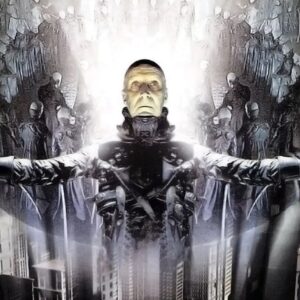
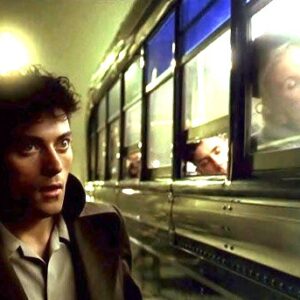
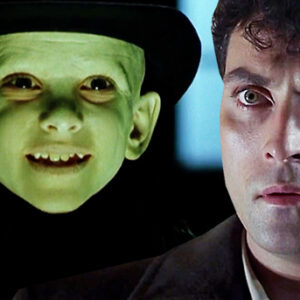

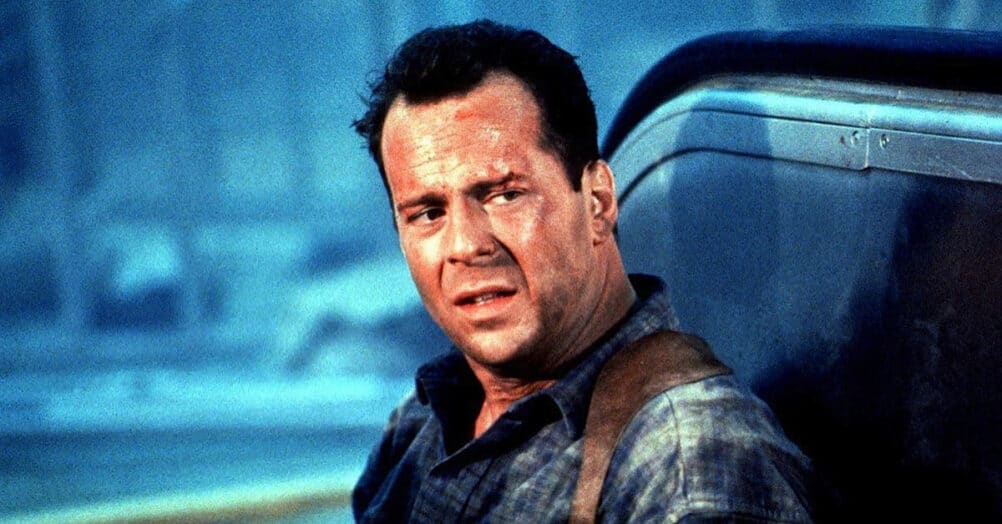




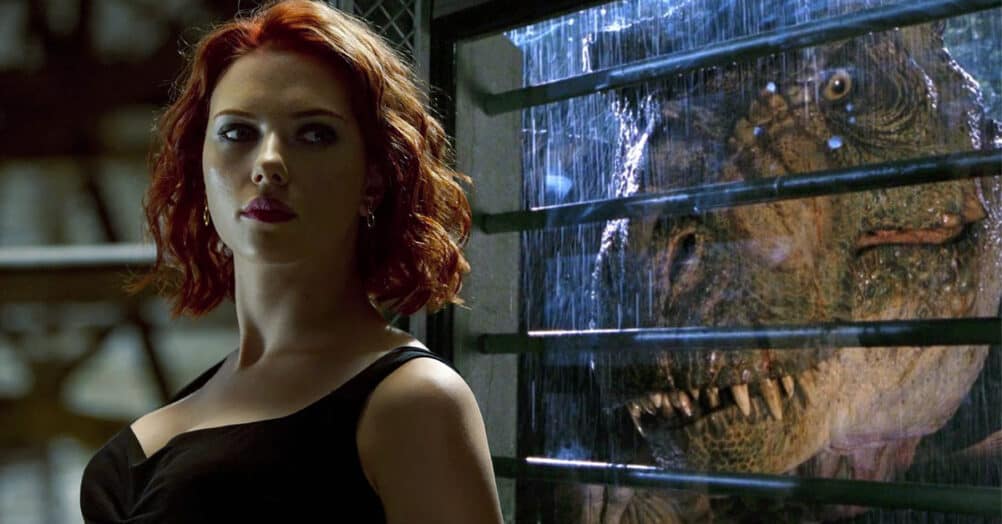



Follow the JOBLO MOVIE NETWORK
Follow us on YOUTUBE
Follow ARROW IN THE HEAD
Follow AITH on YOUTUBE